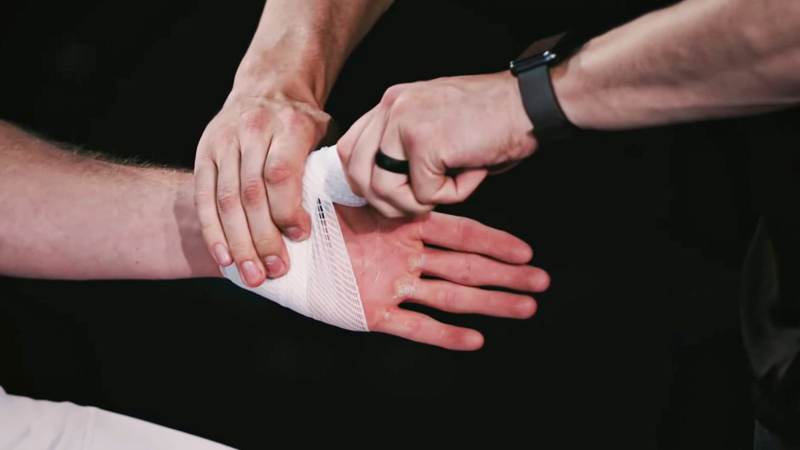A catcher’s thumb, a common injury among baseball players, can hinder performance and cause discomfort. In this guide, discover effective treatment methods to aid recovery from this challenging condition.
From immediate first aid to comprehensive medical interventions, understanding how to treat catcher’s thumb.
Whether you’re a catcher or involved in baseball, knowing the right steps can accelerate healing and prevent long-term complications.
Let’s explore a range of remedies, from initial care to rehabilitation techniques, empowering players to bounce back stronger and safeguard against future injuries. So, stay sharp.
What Is Catcher Thumb
“Catcher’s thumb,” also known as “thumb sprain” or “gamekeeper’s thumb,” is an injury prevalent in baseball catchers.
It occurs when the thumb is forcefully bent backward, often by the impact of a fast-moving ball or an awkward catch.
This strain damages the ulnar collateral ligament of the thumb, leading to pain, swelling, and reduced grip strength.
Catchers are particularly susceptible due to the repetitive stress on the thumb while catching high-velocity pitches.
Treatment involves rest, ice, compression, and sometimes splinting or taping to support the thumb’s healing. Severe cases might require surgery.
Proper technique, strengthening exercises, and using protective gear like mitts designed to absorb impact can help prevent the catcher’s thumb.
How to Treat Catcher’s Thumb Pain from Hitting Baseball?
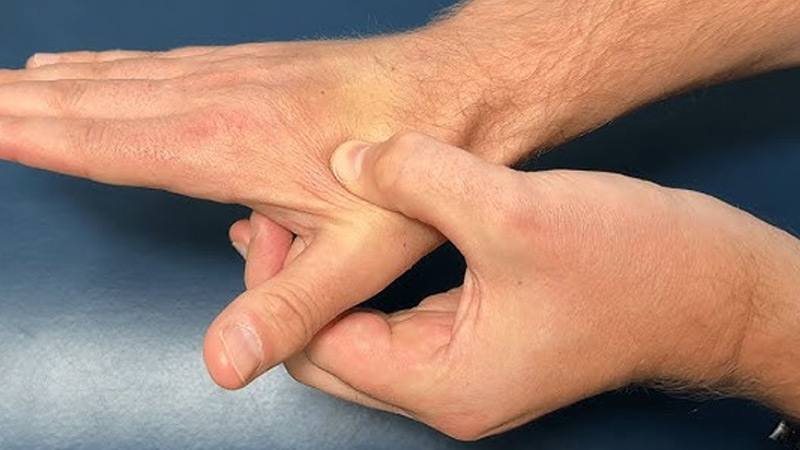
When treating a catcher’s thumb pain resulting from hitting a baseball, it’s crucial to address the injury promptly to aid healing and prevent further damage.
Rest and Ice
Immediately after the injury, rest the thumb to avoid aggravating the pain.
Apply ice wrapped in a cloth for 15-20 minutes every few hours to reduce swelling and alleviate discomfort.
Compression and Elevation
Using a compression bandage can help minimize swelling and provide support.
Elevating the hand above heart level when possible also aids in reducing swelling and promoting circulation for faster healing.
Seek Medical Evaluation
If the pain is severe, persists, or if there’s significant swelling or difficulty moving the thumb, seeking medical evaluation is crucial.
A doctor can assess the extent of the injury and recommend appropriate treatment, which might involve immobilization with a splint or brace.
Physical Therapy and Rehabilitation
Once the acute phase subsides, engaging in physical therapy can be beneficial.
Therapeutic exercises can help regain strength and flexibility in the thumb, reducing the likelihood of re-injury and expediting the return to normal activities.
Remember, early and proper treatment can significantly impact the recovery process and prevent long-term issues.
Diagnosing Catcher’s Thumb
Diagnosing a catcher’s thumb involves a comprehensive assessment to determine the extent of the injury and develop an appropriate treatment plan.
Physical Examination
A doctor will conduct a thorough physical examination of the thumb, assessing for tenderness, swelling, and range of motion.
They may apply pressure or perform specific movements to pinpoint the affected area.
Imaging Studies
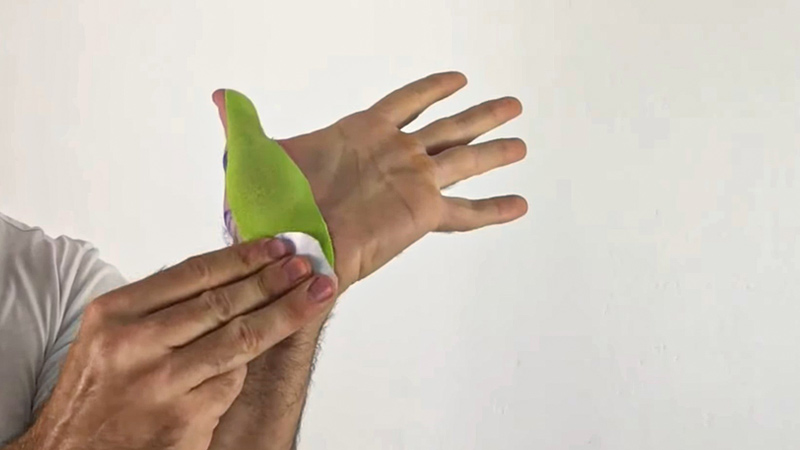
X-rays are typically the first imaging method used to rule out fractures or dislocations.
In more complex cases or when ligament damage is suspected, an MRI (Magnetic Resonance Imaging) may be recommended to visualize soft tissue structures and confirm the extent of the injury.
Stress Tests
Physicians might perform stress tests to evaluate the stability of the thumb’s ligaments.
These tests involve applying pressure or specific movements to assess the degree of instability or looseness in the ligaments.
Clinical History
Understanding the circumstances surrounding the injury is crucial. Information about when the pain started, the activities involved, and any previous instances of thumb injuries aids in accurate diagnosis and treatment planning.
Specialist Consultation
If the injury is severe or complex, a hand specialist or orthopedic surgeon might be consulted for a more detailed evaluation and to discuss potential treatment options.
A combination of these diagnostic approaches helps in accurately diagnosing the catcher’s thumb, guiding the appropriate treatment pathway for effective recovery.
Immediate First Aid for Catcher Thumb Injury Symptoms
When facing the immediate symptoms of a catcher’s thumb injury, providing swift first aid can help alleviate discomfort and prevent further damage.
Rest and Immobilization
Immediately stop using the affected thumb to prevent additional strain.
Immobilize the thumb by gently wrapping it with a bandage or using a thumb splint to limit movement and reduce the risk of exacerbating the injury.
Ice Application
Applying ice wrapped in a cloth or using a cold pack on the injured thumb can help reduce swelling and alleviate pain.
Apply for 15-20 minutes every few hours within the initial 48 hours after the injury.
Elevation
Keep the injured hand elevated above heart level to minimize swelling. This position can aid in reducing inflammation by allowing excess fluids to drain away from the injured area.
Pain Management
Over-the-counter pain relievers like ibuprofen or acetaminophen can help manage pain and reduce swelling during the initial phase of the injury.
However, it’s important to follow the recommended dosage and consult a healthcare professional for proper guidance.
Medical Assessment
If the pain is severe, there’s significant swelling, or there’s difficulty moving the thumb, seeking immediate medical evaluation is essential.
This can ensure appropriate treatment and prevent potential complications.
Home Remedies and Self-Care for Catcher’s Thumb Injury
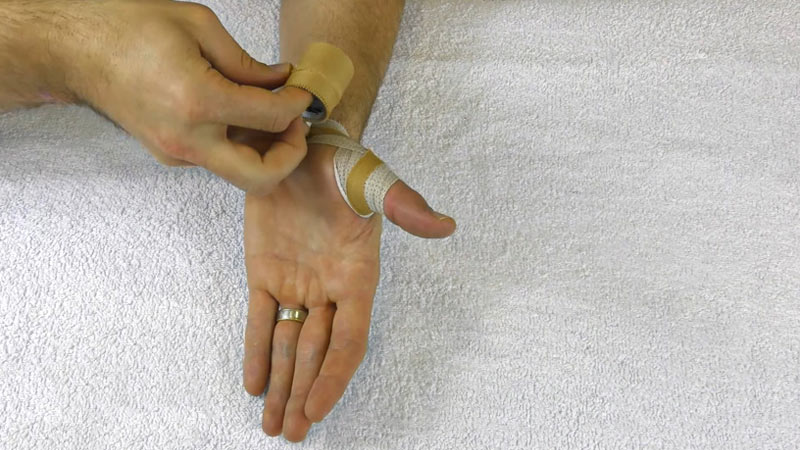
In addition to seeking medical advice, several home remedies and self-care practices can aid in managing a catcher’s thumb injury and supporting the recovery process.
R.I.C.E. Method
Rest, Ice, Compression, and Elevation form the basis of self-care.
Rest the thumb to prevent further strain, apply ice for 15-20 minutes several times a day to reduce swelling, use a compression bandage to support the thumb, and elevate the hand to alleviate swelling and promote healing.
Thumb Immobilization
Utilize thumb splints or braces to limit movement and provide additional support to the injured thumb.
This helps prevent accidental stress on the ligaments, allowing them time to heal.
Gentle Exercise and Stretching
Once the acute phase subsides, gentle exercises and controlled stretching can aid in restoring strength and flexibility in the thumb.
However, it’s crucial to consult a healthcare professional or a physical therapist for guidance on appropriate exercises and timing.
Warm Compresses and Soaks
Alternating between cold and warm compresses or soaking the thumb in warm water can help relax muscles and promote blood circulation, potentially aiding in the healing process.
Healthy Diet and Supplements
A diet rich in nutrients, particularly those supporting bone health and tissue repair, can aid in recovery.
Omega-3 fatty acids, calcium, and vitamin D are beneficial. However, consult a healthcare provider before taking any supplements.
Consistent application of these self-care measures, along with proper medical guidance, can significantly contribute to the healing process of the catcher’s thumb.
Prevention Strategies for Catcher Thumb Injury
Preventing a catcher’s thumb injury involves a combination of techniques and protective measures to minimize the risk of thumb strain while playing baseball.
Proper Technique and Positioning
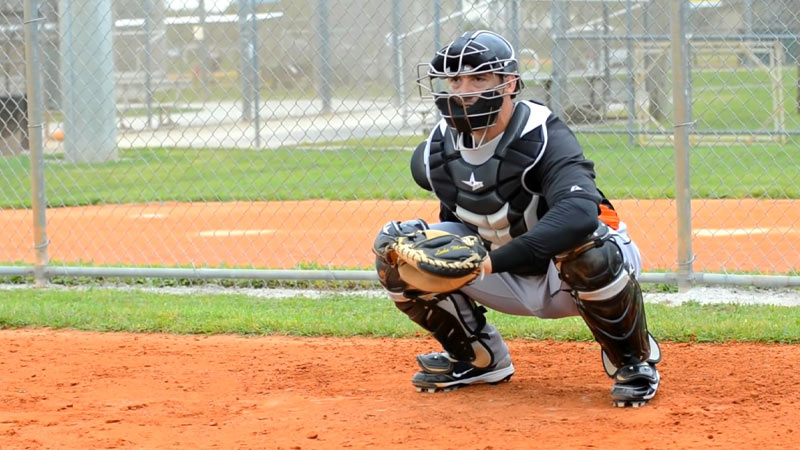
Ensuring proper catching technique is crucial. Coaches and trainers should emphasize correct hand positioning and catching methods to reduce the impact of fast-moving pitches on the thumb.
This includes using the entire hand to catch the ball rather than solely relying on the thumb.
Quality Protective Gear
Investing in high-quality catching equipment can significantly reduce the risk of thumb injuries.
Specifically designed mitts or gloves with extra padding around the thumb area offer enhanced protection against the impact of fast pitches.
Strength and Flexibility Training
Incorporating thumb-specific strengthening exercises and overall hand and wrist conditioning into regular training routines can help fortify the muscles and ligaments, making them more resilient to stress and reducing the risk of injury.
Rest and Recovery
Avoid overuse by allowing adequate rest periods between practices and games. Overworked muscles and ligaments are more prone to injury.
Schedule rest days and avoid excessive repetition of catching drills without sufficient recovery time.
Regular Equipment Inspection
Ensure catching equipment is in good condition. Check for any wear and tear on gloves or mitts and replace them when necessary to maintain optimal protection.
Implementing these preventative strategies alongside proper coaching and attentive equipment maintenance can significantly reduce the likelihood of catcher’s thumb injuries during baseball play.
FAQs
How to heal a catcher’s thumb?
To facilitate the healing of the catcher’s thumb, it is crucial to first rest the affected hand and avoid any activities that exacerbate the pain.
Applying ice to reduce inflammation, wearing a thumb splint for support, and taking anti-inflammatory medications can aid in the recovery process.
How to get rid of the catcher’s thumb pain?
To alleviate the catcher’s thumb pain, consider a combination of rest, ice, compression, and elevation (RICE). Additionally, over-the-counter pain relievers can provide temporary relief.
If the pain persists, consult a healthcare professional for a comprehensive assessment and potential physical therapy to strengthen the thumb and enhance recovery.
Can I continue playing with the catcher’s thumb?
Continuing to play with the catcher’s thumb can worsen the condition and prolong recovery. It is advisable to cease activities that involve gripping or putting pressure on the thumb.
Rest and proper treatment are essential to prevent further damage and expedite healing.
Are there specific exercises for catcher’s thumb rehabilitation?
Yes, rehabilitation exercises play a vital role in recovering from a catcher’s thumb. These may include gentle thumb stretches, grip-strengthening exercises, and mobility drills.
Consult with a healthcare professional or a certified therapist to create a personalized rehabilitation plan tailored to your specific condition and needs.
How long does it take to recover from a catcher’s thumb?
The recovery time for a catcher’s thumb varies based on the severity of the injury and the adherence to the prescribed treatment plan. In mild cases, recovery may take a few weeks, while more severe cases may require several months.
Consistent follow-up with healthcare professionals and commitment to rehabilitation exercises can significantly expedite the recovery process.
Wrapping Up
Managing and treating a catcher’s thumb in baseball involves a multi-faceted approach, from immediate care to sustained rehabilitation.
The key lies in prompt action, proper medical guidance, and a commitment to preventative measures.
By implementing these strategies, players can recover effectively and return to the game with reduced risk of re-injury, ensuring long-term hand health and optimal performance on the field. Thank you for your time.

